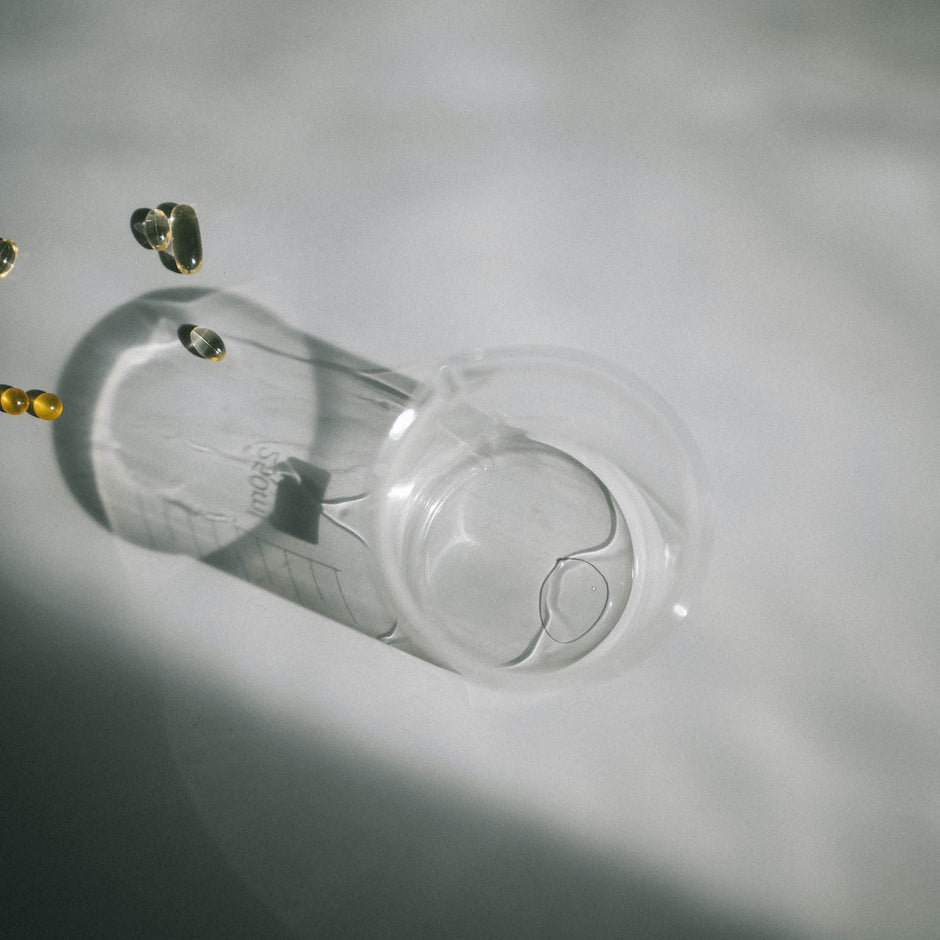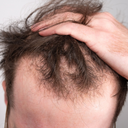Hair thinning, balding, and shedding are common hair disorders, especially among men as they age. These disorders are frequently characterized by miniaturisation of the hair follicle, which may or may not be reversible.
The miniaturisation of the hair follicles involves a reduction in size and change in the structure of the follicles, ultimately resulting in baldness and diffuse hair loss.
This article delves into the details of hair follicle miniaturisation by examining the mechanisms involved, likely causes, indications of the condition, and various treatments available.
Table of content
What Is Hair Miniaturisation?

Figure 1. Simplified dermal mechanisms underlying terminal follicle cycling and miniaturisation
(Source: A bald statement-Current approaches to manipulate miniaturisation focus only on promoting hair growth, Pantelireis N. & Claire A. H., 2018)
A Brief Overview
The phenomenon of hair follicle miniaturisation is the root cause of many hair loss issues, such as male and female pattern baldness, and alopecia areata.
This shrinking of the follicles does not support healthy hair growth, and consequently results in fragile and thin strands that are easily prone to shedding. This hormonal disorder will lead to severe hair loss unless treated immediately and adequately.
During the process of hair follicle miniaturisation, the hair follicles shrink as they progress from terminal to vellus-like hairs (peach fuzz) resulting in a reduced terminal-to-vellus hair ratio.
Hair follicle miniaturisation can occur as an abrupt step in one hair growth cycle and may worsen over consecutive cycles.
In the course of this process, hair follicles transition from terminal to vellus-like hairs (peach fuzz) and result in a decline in the ratio of terminal-to-vellus hair.
Why Does It Happen?
Hair follicle miniaturisation is caused by hormonal and other factors that interfere with the normal hair growth cycle, halting the proliferation of hair follicular cells.
Such changes in the cycle cause the dermal papilla of the hair follicles to shrink in size and thickness.
It is characterised by shorter growth phases, as well as and longer latent lag periods between the growth and shedding phases.
This shortened growth phase and the prolonged transition between active growth and shedding is seen as the primary reason behind hair follicle miniaturisation.
As your leading source for hair health information over the past 4 years, we never compromise on accuracy. When it comes to your health, you deserve information you can truly rely on - and earning your trust is our top priority.
Here's how Scandinavian Biolabs ensures every piece of content meets the highest standards of accuracy and integrity:
- Credentialed Experts: Our reviewers are actively practicing doctors and medical researchers
- Stringent Reviews: Content undergoes rigorous editing by subject specialists and review by a practicing doctor.
- Evidence-Based: We rely on well-established research from trusted scientific sources like peer-reviewed journals and health authorities.
- Full Transparency: Our editorial standards, writer credentials, reviewer credentials, correction process, and funding are all publicly documented.
- Independent Voice: While we do promote products, we operate in a vacuum to business operations. Our main goal is just an unwavering commitment to providing medically-sound guidance.
You can count on Scandinavian Biolabs to consistently deliver the trustworthy health information you deserve. Read our Editorial Standards.
What Causes Hair Miniaturisation?

Following are some of the most common causes of hair follicle miniaturisation, thinning, and shedding of hair:
Genetic Predisposition
Some individuals are genetically susceptible to increased hair follicle miniaturisation, leading to hair shedding and thinning. This is particularly evident in male pattern hair loss (MPHL) and female pattern hair loss (FPHL) as well as other hair loss conditions including alopecia areata.
In androgenetic alopecia, genetic alterations cause the androgen receptors on the hair follicles to become highly sensitive to circulating androgens, resulting in an exaggerated response of hair follicles to these hormones.
Hair follicle miniaturisation follows an X-linked inheritance pattern in the majority of the cases.
Since males inherit only one and females inherit two copies of the X chromosomes, men are more likely to suffer from hair loss disorders and hair follicle miniaturisation.
Hormones
Both the hair growth cycle and morphology of the hair follicles are greatly influenced by the levels of different hormones in the body.
In androgenetic alopecia, testosterone is actively converted to an androgen called dihydrotestosterone (DHT). This conversion is catalyzed by the enzyme 5-alpha reductase located within the hair follicles.
Increased levels of DHT suppress the proliferation of hair follicle cells and interfere with the hair growth cycle. It halts the growth of hair follicles and causes them to undergo hair follicle miniaturisation, further exacerbating hair loss via the growth of fragile and brittle hair strands.
Age
Older adults tend to demonstrate increased miniaturised hair follicles as compared to other younger individuals.
This is because the prevalence and occurrence of pattern baldness increase with age, thus, miniaturisation is seen more frequently in these individuals.
Hair follicle miniaturisation may also be a manifestation of the combined effects of age, genetic predilection, and increased sensitivity to DHT hormone.
Read more about What Happens To Your Hair As You Age.
Alopecia Areata
Hair follicle miniaturisation is also observed in alopecia areata.
Alopecia areata is referred to as a condition that the immune system mistakenly attacks hair follicles.
As compared to androgenetic alopecia which involves the gradual onset of hair follicle miniaturisation, alopecia areata is characterized by abrupt, yet, mostly reversible occurrence of miniaturisation.
What Are the Symptoms of Hair Miniaturisation?

The signs and symptoms of hair follicle miniaturisation are coherent with the hair loss disorder an individual is suffering from. To determine whether you have hair miniaturisation, you need to know the signs of hair miniaturisation:
-
Individuals suffering from hair follicle miniaturisation experience a hairline recession.
This can be defined as backward regression of the hairline across the scalp. It may occur predominantly in the bi-temporal regions of the scalp or may involve the frontal hairline as well.
-
Hair thinning is also indicative of hair follicle miniaturisation.
For men, hair thinning typically appears on the forehead, temporal areas, and top of the head.
By contrast, female patients experience thinning on the sides of their scalp while keeping the frontal area spared. Generally, female patients show signs of hair thinning across the whole scalp, not in localized areas.
-
Individuals suffering from hair follicle miniaturisation tend to suffer from excessive hair shedding.
This is particularly evident during brushing and washing hair as well as people may notice heaps of hair strands on their clothes or pillow covers.
Increased hair shedding is attributed to brittle and fragile hair shafts that are inadequately supported by shrunken or miniaturised hair follicles.
-
Hair follicle miniaturisation may also manifest as balding of the scalp.
In individuals suffering from alopecia areata, small bald patches appear on the scalp. Other forms of hair loss may result in the widening of hair parting.
How to Diagnose Hair Miniaturisation?
To properly address hair follicle miniaturisation issue, it is important to diagnose the condition along with the underlying cause:
- The physician may order blood tests to determine hormonal imbalances and other pathologic markers of hair follicle miniaturisation.
- A hair pull test is also employed for the diagnosis of hair follicle miniaturisation. In this test, the physician or the patient himself/herself grabs a section of hair and gently pulls it upward.
The pull test is usually performed at the vertex of the scalp. While falling off of two hair strands or less is considered normal, falling out of three or more hair strands indicates hair follicle miniaturisation.
- Hamilton-Norwood and Ludwig classification systems are used for classifying patterned hair loss in men and women respectively.
How to Care For Hair Miniaturisation?
Drugs
Pharmacologic formulations include minoxidil and finasteride, both of which are approved by the US Food and Drug Administration.
Minoxidil promotes hair growth by causing vasodilation and promoting blood flow towards the hair follicles. It also stimulates the potassium channels and induces increased proliferation of the hair follicular cells.
Finasteride is an oral medication that is known for its activity against 5-alpha reductase. This drug is a competitive inhibitor of 5-alpha reductase, hence, suppressing the formation of DHT. This aids in the normal progression of the hair growth cycle.
Lifestyle Change
Adopting a healthier lifestyle and making modifications to dietary habits are both essential in aiding hair loss conditions caused by hair follicle miniaturisation.
Ensuring that you consume a balanced and nutritious diet, together with taking necessary supplements whenever needed, can help correct any nutritional deficiencies you may have.
Reduce Stress
By removing sources of environmental, social, and psychological strain, you can diminish the secretion of stress hormones and moderate the fluctuation of other hormones, thus helping to prevent or mitigate hair follicle miniaturization.
Hair Transplant
Hair transplantation is also an effective solution for people affected by hair thinning and associated with hair follicle miniaturisation.
The two commonly used hair transplant techniques include follicular unit extraction (FUE) and follicular unit transplantation (FUT).
Conclusion
Hair follicular miniaturisation is indicative of thinning of hair and impaired proliferative activity of the hair follicular cells. Hair follicle miniaturisation occurs in pattern hair loss and alopecia areata.
The proximity and attachment of miniaturised hair follicles with arector pilli muscles is the key factor for determining the progression of this condition.
The risk of hair follicle miniaturisation increases with genetic susceptibility, age, hormonal imbalances, and other health conditions.
Individuals suffering from hair miniaturisation may present with hairline recession, wider parting, bald areas on the scalp, and excessive shedding and thinning of scalp hair. This condition may be treated by using both herbal preparations and pharmacologic formulations.
Disclaimer
The information we provide is not intended to mitigate, prevent, treat, cure or diagnose any disease or condition. If you have any concerns about your health, please consult your doctor.
References
- Pantelireis, N, Higgins, CA. A bald statement — Current approaches to manipulate miniaturisation focus only on promoting hair growth. Exp Dermatol. 2018; 27: 959– 965. https://doi.org/10.1111/exd.13690
-
https://www.sciencedirect.com/topics/medicine-and-dentistry/hair-growth
- https://www.ncbi.nlm.nih.gov/books/NBK499948/
- https://www.ncbi.nlm.nih.gov/labs/pmc/articles/PMC7432488/
- https://pubmed.ncbi.nlm.nih.gov/17034520/
- https://pubmed.ncbi.nlm.nih.gov/11511857/
- https://pubmed.ncbi.nlm.nih.gov/10674382/
- https://www.ncbi.nlm.nih.gov/labs/pmc/articles/PMC3500053/
- https://www.ncbi.nlm.nih.gov/labs/pmc/articles/PMC5308812/
- https://pubmed.ncbi.nlm.nih.gov/28010890/
- https://www.ncbi.nlm.nih.gov/labs/pmc/articles/PMC4812885/
- https://www.ncbi.nlm.nih.gov/books/NBK513329/
- https://www.ncbi.nlm.nih.gov/labs/pmc/articles/PMC6691938/
- https://www.ncbi.nlm.nih.gov/labs/pmc/articles/PMC5315033/
- https://www.ncbi.nlm.nih.gov/labs/pmc/articles/PMC5397031/
- https://www.ncbi.nlm.nih.gov/books/NBK547740/









